Imagine your furry friend scratching relentlessly, whimpering in discomfort from incessant itching. It’s heartbreaking to witness, isn’t it? Just like humans, dogs can experience itching for various reasons, ranging from allergies to parasites. Understanding the causes, symptoms, and treatment options for itching in dogs is crucial for their well-being. In this comprehensive guide, we’ll delve into all aspects of itching in dogs, equipping you with the knowledge to identify, manage, and prevent this common issue.
Contents Overview
Causes of Itching in Dogs
Itching, medically known as pruritus, is a common issue that can afflict dogs of all breeds and ages. It manifests as scratching, licking, or chewing of the skin, often accompanied by redness, inflammation, and discomfort. Understanding the diverse range of factors that can trigger itching in dogs is crucial for effective management and prevention. Here’s a comprehensive overview of the primary causes:
- Allergies:
- Environmental Allergens: Dogs can develop allergies to various environmental triggers, including pollen, grass, mold, and dust mites. When exposed to these allergens, the immune system may overreact, leading to inflammatory responses and itching.
- Food Allergies: Certain ingredients in commercial dog foods, such as proteins (e.g., beef, chicken), grains (e.g., wheat, corn), or additives, can trigger allergic reactions in sensitive dogs. Food allergies may manifest as gastrointestinal issues, skin problems, or both.
- Contact Allergies: Some dogs may develop allergic reactions to substances they come into contact with, such as certain cleaning products, fabrics, or grooming products. Contact allergies typically affect specific areas of the body that come into contact with the allergen.
- Parasites:
- Fleas: Flea infestations are a common cause of itching in dogs. Flea saliva contains allergens that can trigger intense itching, leading to excessive scratching, chewing, and skin irritation. Even a single flea bite can cause discomfort in sensitive dogs.
- Ticks: Ticks not only feed on a dog’s blood but can also transmit diseases such as Lyme disease and ehrlichiosis. Dogs may itch at the site of a tick bite, and severe infestations can cause generalized itching and inflammation.
- Mites: Sarcoptic mange, caused by the Sarcoptes scabiei mite, and demodectic mange, caused by Demodex canis mites, are two common types of mange in dogs. Mite infestations lead to intense itching, hair loss, and skin lesions.
- Skin Infections:
- Bacterial Infections: Bacteria such as Staphylococcus can colonize the skin, especially in areas with folds or moisture, leading to bacterial dermatitis. Symptoms include itching, redness, pustules, and foul odor.
- Fungal Infections: Yeast (Malassezia) and fungi such as dermatophytes can cause fungal infections of the skin, leading to itching, redness, crustiness, and hair loss. Dogs with compromised immune systems or underlying skin conditions are more susceptible to fungal infections.
- Dry Skin:
- Just like humans, dogs can experience dry skin, particularly in winter or in arid climates. Dry skin can result from factors such as low humidity, frequent bathing with harsh shampoos, or underlying health conditions. Itching associated with dry skin may be mild to moderate and often affects areas with less hair coverage.
- Underlying Health Conditions:
- Hormonal Imbalances: Endocrine disorders such as hypothyroidism or Cushing’s disease can disrupt hormone levels, affecting the health of the skin and coat. Dogs with hormonal imbalances may experience itching, hair loss, and changes in coat texture.
- Autoimmune Diseases: Conditions like pemphigus and lupus can cause the immune system to attack the skin, leading to inflammation, blistering, and itching.
- Cancer: Certain cancers, including mast cell tumors and cutaneous lymphoma, can present with skin lesions, itching, and changes in skin texture. Itching may be localized or generalized, depending on the type and stage of cancer.
Identifying the specific cause of itching in your dog often requires a thorough evaluation by a veterinarian. By understanding the potential triggers, pet owners can take proactive measures to manage itching, alleviate discomfort, and improve their dog’s quality of life.
Symptoms of Itching in Dogs
Itching, medically referred to as pruritus, is a distressing symptom that can manifest in various ways in dogs. Recognizing the signs of itching is crucial for identifying underlying causes and providing appropriate treatment. Here’s an in-depth exploration of the symptoms associated with itching in dogs:
- Excessive Scratching, Licking, or Chewing:
- Dogs experiencing itching often exhibit compulsive behaviors such as scratching at the skin with their paws or rubbing against furniture or other surfaces. They may also excessively lick or chew at affected areas in an attempt to alleviate discomfort.
- The intensity and frequency of scratching, licking, or chewing may vary depending on the underlying cause and severity of itching.
- Redness and Inflammation:
- Itching can lead to visible signs of inflammation, such as redness (erythema) and swelling (edema), in the affected areas of the skin.
- Redness may be diffuse or localized to specific regions where the dog has been scratching or licking excessively. In severe cases, the skin may appear raw, irritated, or even ulcerated.
- Hot Spots (Acute Moist Dermatitis):
- Hot spots, also known as acute moist dermatitis, are localized areas of inflamed, irritated skin that often develop rapidly in response to excessive scratching, licking, or chewing.
- These moist, painful lesions may ooze pus or fluid and are prone to bacterial infection. Hot spots are commonly found on the head, neck, shoulders, and hips of affected dogs.
- Hair Loss (Alopecia):
- Chronic itching can lead to hair loss (alopecia) in affected areas as a result of repeated trauma to the hair follicles. Dogs may develop patchy hair loss or thinning of the coat, particularly in regions where itching is most severe.
- In some cases, hair loss may be accompanied by changes in skin texture, such as scaling, crusting, or thickening.
- Presence of Skin Lesions or Scabs:
- Prolonged scratching or chewing can cause the formation of skin lesions, abrasions, or scabs on the surface of the skin. These lesions may range from small, superficial scratches to deeper wounds or ulcers.
- Dogs may further exacerbate the itching by licking or chewing at the scabs, leading to delayed healing and potential secondary infections.
- Foul Odor:
- Dogs with underlying skin infections or yeast overgrowth may emit a characteristic foul odor from affected areas. Bacterial and fungal infections can produce malodorous discharge or exudate, contributing to the unpleasant smell.
- The presence of a foul odor may indicate the need for veterinary evaluation and treatment to address underlying infections or skin conditions.
- Behavioral Changes:
- Chronic itching can take a toll on a dog’s overall well-being and behavior. Affected dogs may become irritable, restless, or anxious due to discomfort and frustration associated with itching.
- Some dogs may exhibit changes in appetite, sleep patterns, or activity levels as a result of persistent itching and discomfort.
Recognizing these symptoms of itching in dogs is essential for timely intervention and effective management of underlying causes. If your dog exhibits signs of itching, consult with a veterinarian to determine the underlying cause and develop a comprehensive treatment plan tailored to your pet’s needs.
Diagnosis of Itching in Dogs
When a dog displays signs of itching, a thorough diagnostic approach is essential to identify the underlying cause and formulate an effective treatment plan. Veterinary professionals utilize a combination of clinical evaluation, diagnostic tests, and specialized procedures to pinpoint the root cause of the itching. Here’s a detailed explanation of the diagnostic process:
- Physical Examination:
- The initial step in diagnosing itching in dogs involves a comprehensive physical examination by a veterinarian. During the exam, the vet will assess the dog’s skin and coat for signs of inflammation, lesions, parasites, or other abnormalities.
- Observations may include noting areas of redness, swelling, hair loss, skin thickening, or presence of discharge. The veterinarian may also palpate the skin to identify areas of tenderness or pain.
- History and Clinical Signs:
- Obtaining a detailed medical history from the pet owner is crucial for understanding the onset, duration, and progression of the itching symptoms. Information about the dog’s diet, environment, grooming routine, and previous medical conditions can provide valuable insights.
- Descriptions of specific symptoms, such as the location and severity of itching, presence of lesions or scabs, and any recent changes in behavior or appetite, help guide the diagnostic process.
- Skin Scraping:
- Skin scraping is a diagnostic technique used to collect samples of skin cells, hair, and debris for microscopic examination. It is particularly useful for detecting external parasites such as fleas, ticks, or mites.
- During the procedure, a small blade or spatula is used to scrape the surface of the skin, typically from areas with visible lesions or suspected parasite infestation. The collected material is then examined under a microscope to identify any parasites or their eggs.
- Cytology:
- Cytology involves the microscopic examination of skin cell samples obtained from affected areas. It helps identify inflammatory cells, bacteria, yeast, or fungal elements present on the skin.
- Skin cytology can provide valuable information about underlying infections, such as bacterial dermatitis, yeast overgrowth (Malassezia), or dermatophyte fungi (ringworm).
- Allergy Testing:
- Allergy testing may be recommended to identify potential allergens triggering allergic reactions in dogs. Allergy testing can be conducted through various methods, including blood tests (serology) and skin prick tests (intradermal testing).
- Blood tests measure the levels of specific antibodies (IgE) produced in response to allergens, helping identify potential environmental or food allergens. Skin prick tests involve injecting small amounts of allergens under the skin and observing any allergic reactions.
- Identifying and avoiding allergens can help manage allergic skin conditions and reduce itching in affected dogs.
- Biopsy:
- In cases where skin lesions are present or underlying skin conditions are suspected, a skin biopsy may be performed. A biopsy involves the surgical removal of a small sample of skin tissue for histopathological examination.
- Histopathology allows for detailed evaluation of skin structure, inflammation, and cellular changes under a microscope. It helps diagnose underlying skin diseases, autoimmune conditions, or neoplastic (cancerous) growths contributing to itching.
- Additional Tests:
- Depending on the clinical presentation and suspected underlying causes, additional diagnostic tests may be recommended. These may include blood tests to evaluate organ function, hormone levels, or immune status; fungal cultures to identify dermatophyte infections; or imaging studies such as radiographs (X-rays) or ultrasound to assess internal organs for systemic diseases.
By combining these diagnostic approaches, veterinarians can accurately diagnose the underlying cause of itching in dogs and develop tailored treatment plans to address the specific needs of each patient. Early diagnosis and intervention are key to alleviating itching, improving the dog’s quality of life, and preventing complications associated with underlying skin conditions or diseases.
Treatment Options for Itching in Dogs
Managing itching in dogs requires a multifaceted approach that targets the underlying cause while providing symptomatic relief for the dog’s discomfort. Treatment options vary depending on the specific cause of itching identified through diagnostic evaluation. Here’s an in-depth look at the various treatment modalities available:
- Medications:
- Antihistamines: Antihistamines such as diphenhydramine, cetirizine, or loratadine may be prescribed to alleviate itching associated with allergies. These medications block the effects of histamine, a chemical released during allergic reactions.
- Corticosteroids: Corticosteroids like prednisone or dexamethasone are potent anti-inflammatory drugs that can effectively reduce itching and inflammation in dogs with allergic skin conditions. However, long-term use of corticosteroids may have side effects and should be used judiciously under veterinary supervision.
- Topical Treatments: Topical creams, ointments, or sprays containing corticosteroids, antibiotics, or antifungal agents may be prescribed to address localized itching, bacterial infections, or yeast overgrowth on the skin.
- Immunosuppressants: In cases of severe or refractory itching, immunosuppressive medications such as cyclosporine may be recommended to modulate the immune response and alleviate symptoms.
- Parasite Control:
- Flea and Tick Preventatives: Administering monthly flea and tick preventatives is essential for preventing infestations and reducing itching caused by flea bites. Various topical or oral medications are available for flea and tick control, with options tailored to the dog’s size, age, and lifestyle.
- Antiparasitic Medications: In cases of mite infestations such as sarcoptic or demodectic mange, specific antiparasitic medications may be prescribed to eradicate the parasites and alleviate itching. Treatment duration and frequency may vary depending on the severity of infestation and response to therapy.
- Dietary Management:
- Hypoallergenic Diets: Dogs with suspected food allergies may benefit from hypoallergenic diets formulated with novel protein sources (e.g., duck, venison) and limited ingredient lists to minimize potential allergens. These diets help identify and eliminate food triggers contributing to itching and allergic skin reactions.
- Elimination Diets: Elimination diets involve feeding the dog a novel protein and carbohydrate source that they have not been exposed to previously. This approach helps identify and eliminate specific food ingredients causing allergic reactions in sensitive dogs.
- Environmental Management:
- Allergen Avoidance: Minimizing exposure to environmental allergens such as pollen, dust mites, or mold can help reduce allergic skin reactions in dogs. Strategies include regular cleaning, use of air purifiers, and minimizing outdoor activities during peak allergy seasons.
- Grooming and Bathing: Regular grooming and bathing with hypoallergenic shampoos can help remove allergens, bacteria, and yeast from the dog’s coat and skin. Bathing frequency and product selection should be based on the dog’s skin condition and veterinarian’s recommendations.
- Supplements:
- Omega-3 Fatty Acids: Omega-3 fatty acid supplements derived from fish oil or flaxseed oil can help improve skin health, reduce inflammation, and alleviate itching in dogs with allergic skin conditions. These supplements support the skin’s natural barrier function and may enhance the effectiveness of other treatments.
- Probiotics: Probiotic supplements containing beneficial bacteria can help restore microbial balance in the gut and support immune function. A healthy gut microbiome may contribute to overall skin health and reduce the risk of allergic reactions.
- Treatment of Underlying Conditions:
- Addressing underlying health conditions such as hormonal imbalances, autoimmune diseases, or skin infections is essential for long-term management of itching in dogs. Treatment may involve hormone replacement therapy, immunosuppressive drugs, or antimicrobial medications tailored to the specific condition diagnosed.
- Environmental Enrichment and Behavioral Modification:
- Providing environmental enrichment, mental stimulation, and positive reinforcement can help distract dogs from itching behaviors and reduce stress-related itching. Interactive toys, puzzles, and regular exercise can promote mental and physical well-being, contributing to overall skin health.
It’s important to note that treatment should be individualized based on the dog’s medical history, diagnostic findings, and response to therapy. Regular follow-up visits with a veterinarian are essential to monitor progress, adjust treatment protocols as needed, and ensure optimal management of itching in dogs. Collaborative efforts between pet owners and veterinary professionals are key to achieving successful outcomes and improving the dog’s quality of life.
Prevention Tips for Itching in Dogs
While some causes of itching in dogs may be unavoidable, there are several preventive measures pet owners can take to minimize the risk of itching and promote overall skin health in their canine companions. By implementing proactive strategies and practicing good pet care habits, you can help reduce the likelihood of itching-related issues in your dog. Here are some comprehensive prevention tips:
- Regular Flea and Tick Prevention:
- Administer monthly flea and tick preventatives year-round to protect your dog from infestations and prevent itching caused by flea bites.
- Choose flea and tick control products recommended by your veterinarian based on your dog’s size, age, and lifestyle. Options include topical treatments, oral medications, and collars.
- Maintain a Healthy Diet:
- Provide a balanced, nutritious diet tailored to your dog’s age, breed, and specific dietary needs. Choose high-quality commercial dog foods or consult with a veterinary nutritionist to formulate homemade diets.
- Consider hypoallergenic or limited ingredient diets for dogs with known food allergies or sensitivities. Avoid feeding table scraps or foods containing potential allergens, such as grains, artificial additives, or common protein sources like beef or chicken.
- Regular Grooming and Hygiene:
- Establish a regular grooming routine that includes brushing your dog’s coat to remove loose hair, dirt, and debris. Regular grooming helps distribute natural oils, prevent matting, and reduce the risk of skin irritation.
- Bathe your dog as needed with a mild, hypoallergenic shampoo formulated specifically for dogs. Avoid over-bathing, as excessive bathing can strip the skin of its natural oils and lead to dryness and itching.
- Trim your dog’s nails regularly to prevent overgrowth and reduce the risk of accidental skin injuries or infections. Check for signs of ear infections and clean your dog’s ears as recommended by your veterinarian.
- Environmental Management:
- Create a clean, comfortable living environment for your dog by regularly cleaning and vacuuming floors, furniture, and bedding to remove allergens, dust, and pet dander.
- Use air purifiers with HEPA filters to improve indoor air quality and reduce airborne allergens such as pollen, mold spores, and dust mites.
- Minimize outdoor exposure during peak allergy seasons or high pollen counts. Avoid walking your dog in areas with tall grass, weeds, or known environmental allergens.
- Regular Veterinary Check-ups:
- Schedule routine wellness visits with your veterinarian to monitor your dog’s overall health and address any emerging issues promptly.
- Discuss preventive healthcare measures with your veterinarian, including vaccination schedules, parasite control, and dental care recommendations.
- Seek veterinary advice if you notice any changes in your dog’s skin, coat, or behavior, such as itching, redness, hair loss, or signs of discomfort.
- Stress Management and Behavioral Enrichment:
- Provide your dog with opportunities for mental stimulation, physical exercise, and social interaction to reduce stress and boredom.
- Offer a variety of interactive toys, puzzles, and enrichment activities to keep your dog mentally engaged and prevent anxiety-related itching behaviors.
- Practice positive reinforcement training techniques to promote desirable behaviors and discourage excessive scratching, licking, or chewing.
- Monitor Environmental Allergens:
- Pay attention to seasonal changes and environmental factors that may trigger allergic reactions in your dog, such as pollen, grass, weeds, or mold.
- Limit outdoor exposure during peak allergy seasons or windy days when allergen levels are high. Wipe your dog’s paws and coat after outdoor activities to remove potential allergens.
By incorporating these preventive measures into your dog’s care routine, you can help minimize the risk of itching-related issues and promote optimal skin health and overall well-being. Remember to consult with your veterinarian for personalized advice and recommendations tailored to your dog’s specific needs and health status. With proactive management and attentive care, you can help your furry friend enjoy a happy, itch-free life.
Bottom Line
Itching in dogs can significantly impact their quality of life, but with proper understanding and management, you can help alleviate their discomfort and prevent future episodes. By identifying the underlying cause, seeking veterinary care, and implementing appropriate treatment and preventive measures, you can ensure your furry companion enjoys a happy, itch-free life. Stay vigilant, prioritize their well-being, and cherish the joy they bring into your life.


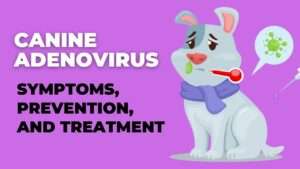
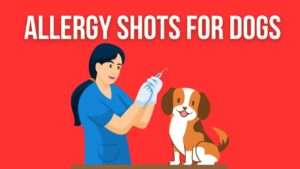
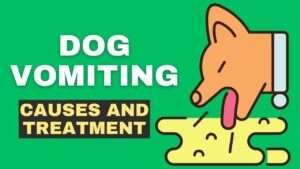



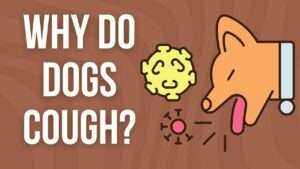

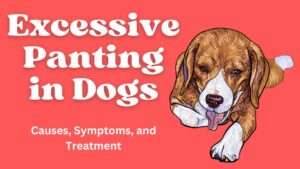




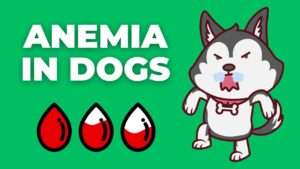


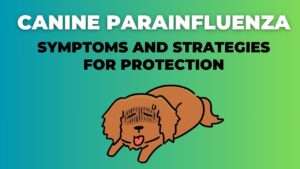

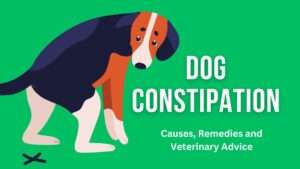
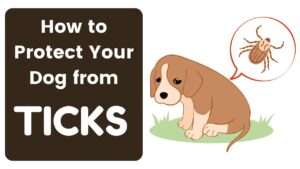

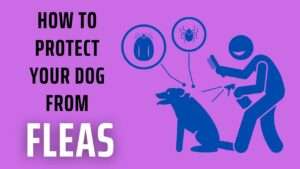

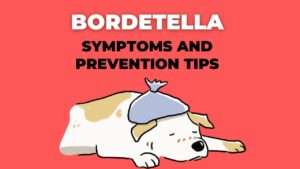
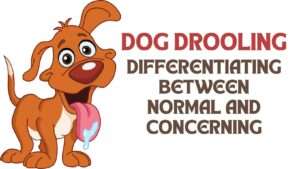
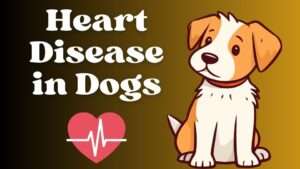
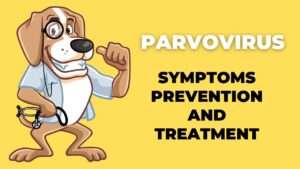







+ There are no comments
Add yours